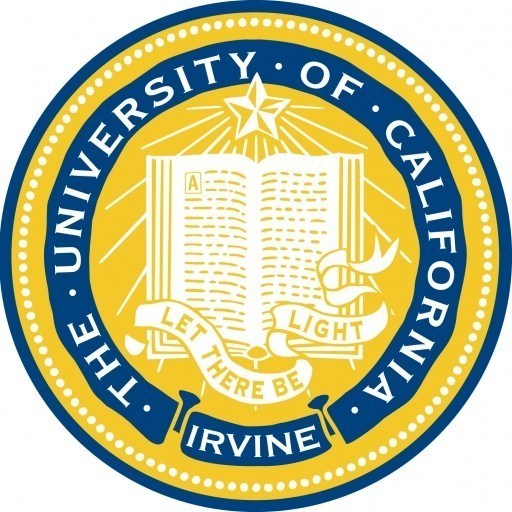Photos of university / #ucirvine
Transportation Systems Engineering at the University of California offers a comprehensive and interdisciplinary education designed to prepare students for innovative careers in the planning, design, operation, and management of transportation systems. This program emphasizes the development of technical expertise and analytical skills necessary to address the complex challenges faced by modern transportation infrastructure, including traffic congestion, environmental sustainability, safety, and technological advancements such as autonomous vehicles and intelligent transportation systems.
Students in this program gain a strong foundation in areas such as transportation planning, traffic flow theory, transportation data analysis, infrastructure development, and transportation policy. The curriculum integrates coursework in civil engineering, urban planning, and systems engineering to provide a holistic understanding of transportation networks and their role within urban and regional development. Practical experience is emphasized through laboratory work, projects, and collaborations with industry stakeholders, enabling students to apply theoretical knowledge to real-world problems.
The program's faculty comprises leading researchers and industry experts dedicated to advancing innovative solutions for sustainable and efficient transportation. Students benefit from cutting-edge research facilities and dedicated centers focused on transportation research, providing opportunities for engagement in topics like congestion management, multimodal transportation, and transportation cyber-physical systems.
Graduates of the Transportation Systems Engineering program are well-equipped for careers in government agencies, consulting firms, transportation authorities, and private industry, contributing to the development of smarter, safer, and more sustainable transportation systems. The program also provides a solid foundation for those interested in pursuing doctoral studies or research careers in transportation engineering and related fields.
This program is ideal for individuals passionate about improving transportation infrastructure and services, with a keen interest in technological innovation, sustainability, and urban mobility solutions. By fostering a collaborative and multidisciplinary learning environment, the University of California prepares students to become leaders capable of making significant contributions to the evolution of transportation systems in a rapidly changing world.
Transportation Systems Engineering (TSE) Preliminary Exam
Satisfactory completion prior to the seventh quarter of enrollment of a PhD Preliminary Examination designed to assess mastery of core competencies is required. The examination assesses the student’s mastery of subject matter and understanding of their inter-relationships.
In order to take the PhD Preliminary Examination the student must have first successfully completed the below-specified GPA requirements in six (6) courses: CEE220A Transportation Demand Analysis, CEE221A Transportation Systems Analysis, CEE224A Transportation Data Analysis, CEE228A Transportation Network Analysis, CEE283 Mathematical methods in Engineering Analysis, and one of either CEE 226A or CEE 229A. The faculty reserves the right replace any of these courses prior to the quarter when they are normally scheduled and inform the PhD students of the replacement course.
A combined GPA of 3.7 or greater with no grade less than B is required in the 6 core courses, for the student to be eligible for the PhD Preliminary Examination. The cases of exception are:
- Students are allowed to substitute a course in the list with an advanced course on the same topic, subject to approval of the TSE graduate advisor before the start of such a course.
- Students who had taken a course in the list at UCI before they had entered the PhD program are allowed to either use the grade in the course, or enroll for a special studies course administered by the faculty in charge of that particular course in the year preceding the preliminary examination, and report the grade, provided the faculty has conducted an examination for the special studies course.
The students shall submit the transcript with the grades along with the list of courses approved by the TSE graduate advisor to the CEE department graduate coordinator, who needs to approve the eligibility at least a week prior to the preliminary examination. Not satisfying the GPA requirement is normally grounds for dismissal from the program.
The students will be informed of the results of the preliminary examination in the form of a PASS or FAIL within one week from the submission deadline of Part (II) below. The students are allowed to attempt the examination twice, and a FAIL in the second examination results in automatic dismissal from the program.
Format of the PhD Preliminary Examination
The PhD Preliminary Examination has two parts – Part (I) a written examination to test core topics proficiency and Part (II) a written examination to test the ability to develop a research proposal. A pass in each of the 4 areas of Part (I) as well as a pass in Part (II) is required for a student to pass the examination.
Part (I) Written examination on core topics proficiency
The written examination is for demonstration of competency in each of the following areas:
- traffic engineering, traffic flow theory, operations and control
- travel demand, transport economics, transportation planning
- transportation systems analysis, networks
- mathematics and statistics
For each area, 18 questions will be asked, of which 15 should be selected by each student (with the other 3 crossed out). Out of 15 points, a minimum of 9 points (60%) is required for a pass in each area. Each area will be allotted 90 minutes in the examination. The questions are expected to be of the kind that does not require any subjective grading by the faculty.
Part (II) Written demonstration of ability to develop research proposal
Main Task: Each student will develop and submit a research proposal related to the issue described to them. The proposal is not for the student’s own PhD research later. It is rather a proposal that demonstrates the student’s ability to develop one. For each examination cycle, all students may be given the same issue on which to develop their proposal.
The Issue: The students will be given a description of the issue/ topic/ problem on which a proposal is to be made. The selected issue will be different in each examination cycle, but will be sufficiently broad and general to be appropriate for students of varying backgrounds and interests to be able to take to the directions they would like to take it to.
General Guidelines: The proposal needs to show the student’s originality, creativity, and ability to think of solution schemes (algorithmic, computational, etc.). The student may feel free to include in the research plan any topic/scheme of relevance that can be used to tackle the specified problem issue or any component of it. The focus can be in some aspects of the given issue, and does not need to be in solving every item of concern therein. This implies that the student may focus on certain aspects of the issue that their own backgrounds and interests may dictate. The budget for the research is not a concern, but the student is not expected to propose plans that would be considered absolutely impractical financially
Specific Guidelines:
- Originality and creativity are the most important qualities expected in the proposal.
- The proposal should be of a maximum length of 10 pages (double-spaced) in 12 points Times New Roman font. The proposal can be as short as the student wants, as long as it clearly shows the student’s creativity and ability to tackle the research process. It should be made as concise as possible, avoiding unnecessary writing.
- The proposal should include an "Analysis Methodology" section. Complete mathematical formulations would be welcome, but are not necessary and may not be easy to put together quickly. Some plans should, however, be laid out for analytical work. If it is based on "quasianalytical models/tools" such as simulation, computational schemes, it should be pointed out how those schemes/tools would fit within a conceptual analysis framework. Abstract notations and figures are acceptable to explain the methodology.
- A long literature review connected to the issue is neither expected nor desired, but any important past research related to the proposed ideas should be referred to, to demonstrate the ability to find important literature. 17
- The student shall not consult with anyone but is free to access any material online or in printed form. There should be absolutely no plagiarism in the proposal, as that will be grounds for failure. The student shall not cut and paste any published material into the document, unless appropriate reference is given with quotes. The proposal is to be written in the student’s own words.
- No name or other identifying material should be in the submitted document, as the evaluation will be based on blind-reviews by the faculty. A person will be specified for the students to submit the material to, by email by a given deadline, typically within no longer than 2 days after the topic is given
Requirements
- Completed Online Application: Please note that a completed online application includes paying the Application Fee
- Bachelor’s Degree Transcripts: Applicants must submit one set of official transcripts from all institutions they attended prior to graduating with a B.S. degree
- Master’s Degree Transcripts (if applicable): Applicants must submit one set of transcripts for any graduate-level work completed
- Official GRE General Test Scores: Applicants are not required to take GRE subject tests
- Official TOEFL or ILETS scores (if applicable): Applicants who are international students or permanent residents who earned a degree outside of the U.S. are required to submit a TOEFL or ILETS test scores
- Three (3) Letters of Recommendation: We recommend that at least two letters be from academia. The third could be another letter from academia, a supervisor, a mentor, etc.
Scholarships
- Fellowships or Grants
- Teaching or Research Assistantships
- Need-based Financial Aid
- Personal Resources
The Transportation Systems Engineering program at the University of California offers students a comprehensive education designed to prepare them for careers in the planning, design, operation, and management of transportation systems. This interdisciplinary program emphasizes a combination of engineering principles, technological innovations, and policy analysis to address complex transportation challenges in urban, suburban, and rural environments. Students gain a solid foundation in transportation infrastructure, traffic flow theory, safety analysis, and transportation policy, equipping them to contribute to sustainable and efficient transportation networks. The curriculum integrates coursework in civil engineering, logistics, data analysis, and environmental impact assessment, allowing students to develop multidisciplinary expertise. Emphasizing both theoretical knowledge and practical skills, the program often includes hands-on projects, laboratory work, and collaborations with industry stakeholders. Graduates of the program are well-prepared for careers in government agencies, consulting firms, research institutions, and transportation planning organizations. The program also prepares students for advanced study or research in transportation systems, supporting innovation and policy development in this vital sector. The university's location and resources provide unique opportunities for internships, cooperative education, and industry partnerships, fostering real-world experience. Additionally, the program is designed to adapt to emerging trends such as smart transportation, autonomous vehicles, and sustainable urban mobility solutions, ensuring graduates are equipped for future technological advancements. Overall, the Transportation Systems Engineering major at UC aims to produce experts capable of improving transportation infrastructure and services to promote safety, efficiency, and sustainability.



